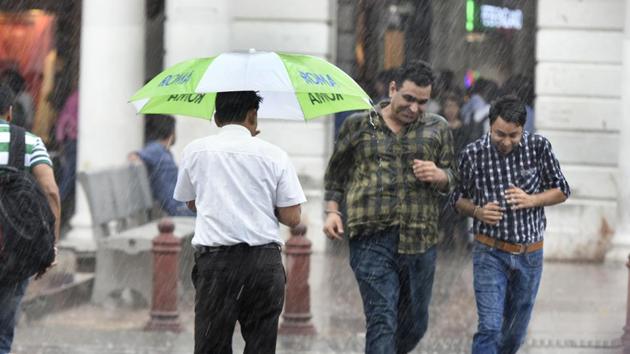Delhi falls silent as the city gets louder
The soaring urban decibel levels have made sure that the sound of rain, unless it really pours, is barely audible.Residents of neighbourhoods around Delhi’s Ridge forests rue how the morning call of peacocks has fallen silent.
The monsoon is about well-being. It also pampers all five senses. The exhilaration lies as much in the visual bounty as in the smells and sounds that accompany the spectacle.

The first rain not only breaks the long spell of searing heat. The sweet smell of the wet earth it invokes is better than any fragrance money can buy. Not surprisingly, the ancient Greeks believed that it came from the fluid that flowed in the veins of their gods.
Equally intoxicating is the patter of the falling rain, which is among the most calming sounds of nature. Not only a mood lifter, it also helps us sleep better.
Today, it is considered hazardous to even stand in the rain in our noxious cities where a downpour washes the air of suspended pollutants. With every grass patch getting sealed under asphalt or concrete, petrichor has become the stuff of nostalgia. Worse, the soaring urban decibel levels have made sure that the sound of rain, unless it really pours, is barely audible.
For those who care, recordings of natural sounds such as raindrops, flowing rivers, ocean waves, waterfalls, birds and crickets chirping, the rustling of leaves, etc are available online. I am not sure if Delhi residents are downloading these yet but the swelling traffic, frenzied honking, continual construction, mindless concretisation, our weather-proof living and just plain insensitivity to local ecology is fast drowning out Delhi’s natural soundscape.
And what are we losing?
Despite its constant onslaught on trees, Delhi still has the highest bird population in the world after Nairobi. But there is little appreciation for the birdsong. The overlit cityscape is hostile to birds and our modern urban living leaves no space for species such as the house sparrow, which has always been part of our household.
Residents of neighbourhoods around the Ridge forests rue how the morning call of peacocks has fallen silent. Today, we hear rock pigeons, which are overfed by compassionate residents for some reason, cooing everywhere. But chirps of other birds are becoming a rarity.
Noise is one of the biggest repellents for birds. Multiple studies conducted across Europe have suggested that birds started singing much earlier in the morning to avoid the urban din, or altogether avoided noisy areas. Certain species of birds were found to be discordant in an urban setting, singing louder and shriller compared to their counterparts in the woodlands. Besides the noise, the architecture of a city could also play a role in altering bird songs, other researchers found.
Not so long ago, we used to hear frogs croaking from under the bushes in our gardens and neighbourhood parks after a good spell of rain. Now, landscaped gardens have killed the undergrowth that was the habitat for insects, frogs and other small species. Frogs have any way become scarce since Delhi’s ponds and water bodies became real estate and the polluted Yamuna wetlands struggled to support life.
It is not just about the sounds of nature. A city’s residents draw familiarity and comfort from the traditional sounds as well. As R Murray Schafer, composer, author and the founder of the World Soundscape Project, explained: “The older the sound, the more it is loved; the newer the sound, the more it is feared.”
In the time of bulk shopping from supermarkets and home deliveries, the street rhythm of the pheriwallas or local vendors is also disappearing. Today, many residents won’t even let them into their gated communities citing security concerns.
But not too long ago, the chants of the vendors were integral to Delhi’s soundscape. Gulzar remembered the rhythmic sale pitches — “chairpai bunwa lo... jamun, thande, kale jamun... hapad ke pappad” — in a poem on summer days in Delhi. Writer Maheshwar Dayal documented them in as many as 10 pages in his book ‘Dilli Jo Ek Shahar Hai’.
For many, these memories may now serve only to evoke nostalgia or document a cultural lapse. However, the restoration of hawking rights is also a question of civil rights and the survival of the economically backward. Likewise, a discordant bird or a missing frog is a loud enough warning that our city has become unliveable. Whatever is silencing those we consider dispensable may well get us soon.
shivani.singh@hindustantimes.com




